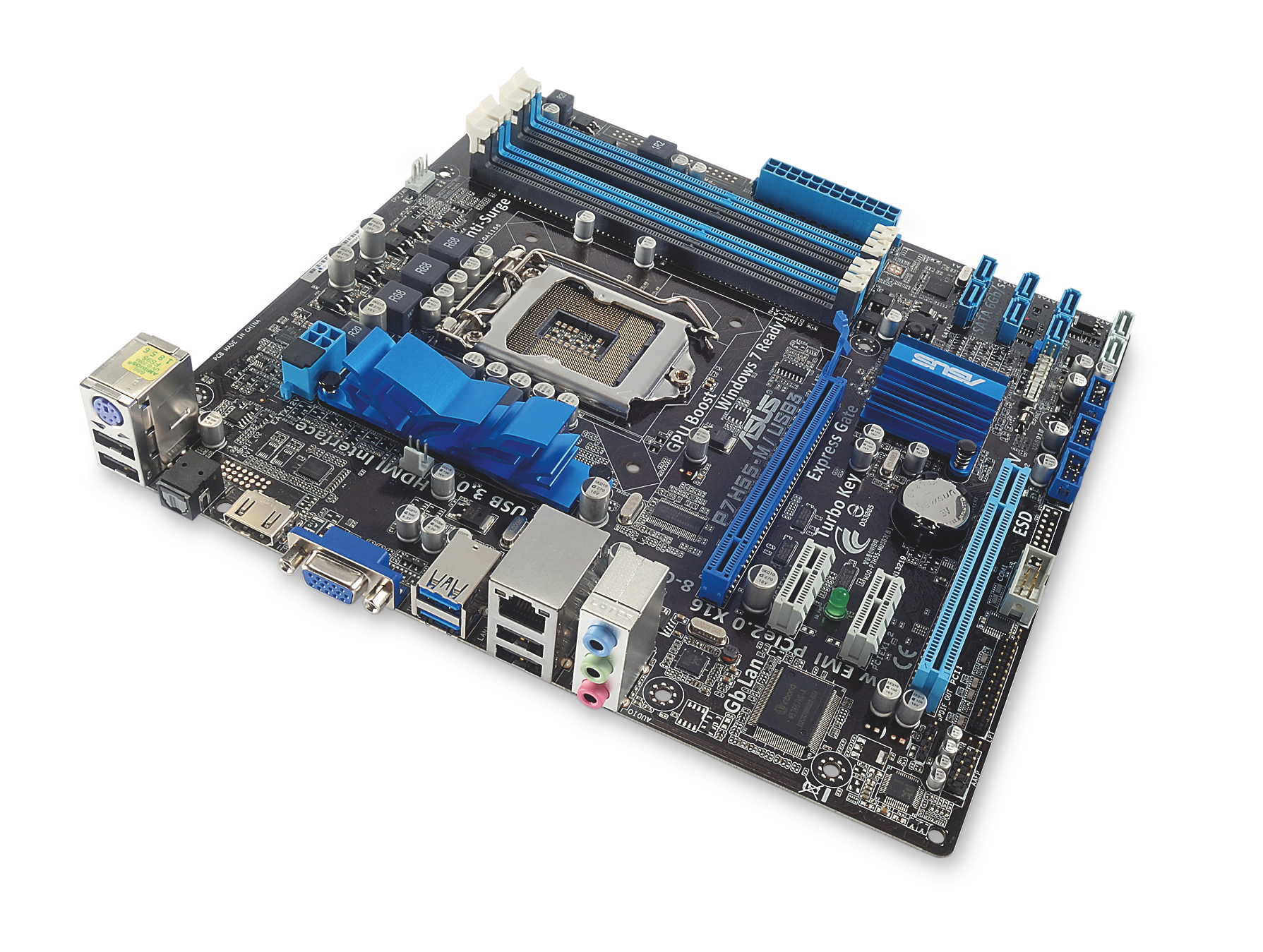Why you can trust TechRadar
We were looking forward to seeing just how the P7H55-M could stretch Intel's marvellously stretchy i7. The automated overclocking features proved to be damp squibs.
The OC Tuner in the BIOS turned our 2.93GHz chip into a 3.88GHz one, which was a good start. Unfortunately, it did it by dropping the clock multiplier to 20 and pushing the base clock to 194MHz, which was too much for the rest of the system to cope with and stay stable. It booted, but benchmarking revealed that the processor throttled back under the stress.
The software-based TurboV auto-tuner wasn't any better. This left the multiplier alone and pushed the base clock from 133MHz to – wait for it – 136MHz. We were unimpressed.
Back to the old fashioned way and into the BIOS we went, loaded the defaults and set controls to manual. At an x24 multiplier and a 155MHz base clock, we had a stable 3.72Ghz system.
For the more dedicated speed merchant there was more to come, adjusting the voltages and tweaking the memory timings and so forth. There are many adjustable settings, clock skew, differential amplitude, individual memory timings and more that might require some form of electrical engineering knowledge to use with confidence.
The Turbo Unlocker feature, when you've set it all up, should give a boost to CPU performance when you hit the hotkey. We remain unconvinced here. If it will overclock without tears, then why not leave it overclocked?
Motherboards have caught the fashion for 'green' features. The P7H55-M boasts an EPU, Energy Processing Unit, this will adjust the core voltage, the FSB, clock multiplier, spin down drives and more.
It's something Asus appears particularly pleased about, and it's clever stuff. This new-found righteousness is even accompanied by a little counter which tells you how many mg of CO2 you've avoided emitting.
Saving power is good, of course, however, Cinebench R10's score was crippled, rising from 47 seconds to over 80 seconds running maximum power saving mode, which is rather against the whole point of building a fast PC.
It's nice but you would do better green work using sleep and low power modes rather than leaving it to EPU to run at reduced ability. There is also something deliciously ironic about watching your CO2 saved meter running.
What else? Well there's a wonderfully bullet-proof BIOS, it'll recover from any stupid mistakes you might make (ahem) and you can switch between multiple BIOS set-ups.
We liked
At this price its hard to get too fussy about the P7H55-M, it covers all the bases rather well. It has the all-important high-speed controllers, although an external SATA port is notable by its absence.
As an over-clocking board it has plenty of potential, too: there's support for 2,000MHz memory and that incremental base clock adjustment is hours of fun.
We disliked
The auto-tuning needs some work though. The small form factor means only one x16 PCIe slot, so no dual-card action, so this isn't the board for that ultimate games monster you always promised yourself.
Follow TechRadar Reviews on Twitter: http://twitter.com/techradarreview
The TechRadar hive mind. The Megazord. The Voltron. When our powers combine, we become 'TECHRADAR STAFF'. You'll usually see this author name when the entire team has collaborated on a project or an article, whether that's a run-down ranking of our favorite Marvel films, or a round-up of all the coolest things we've collectively seen at annual tech shows like CES and MWC. We are one.
